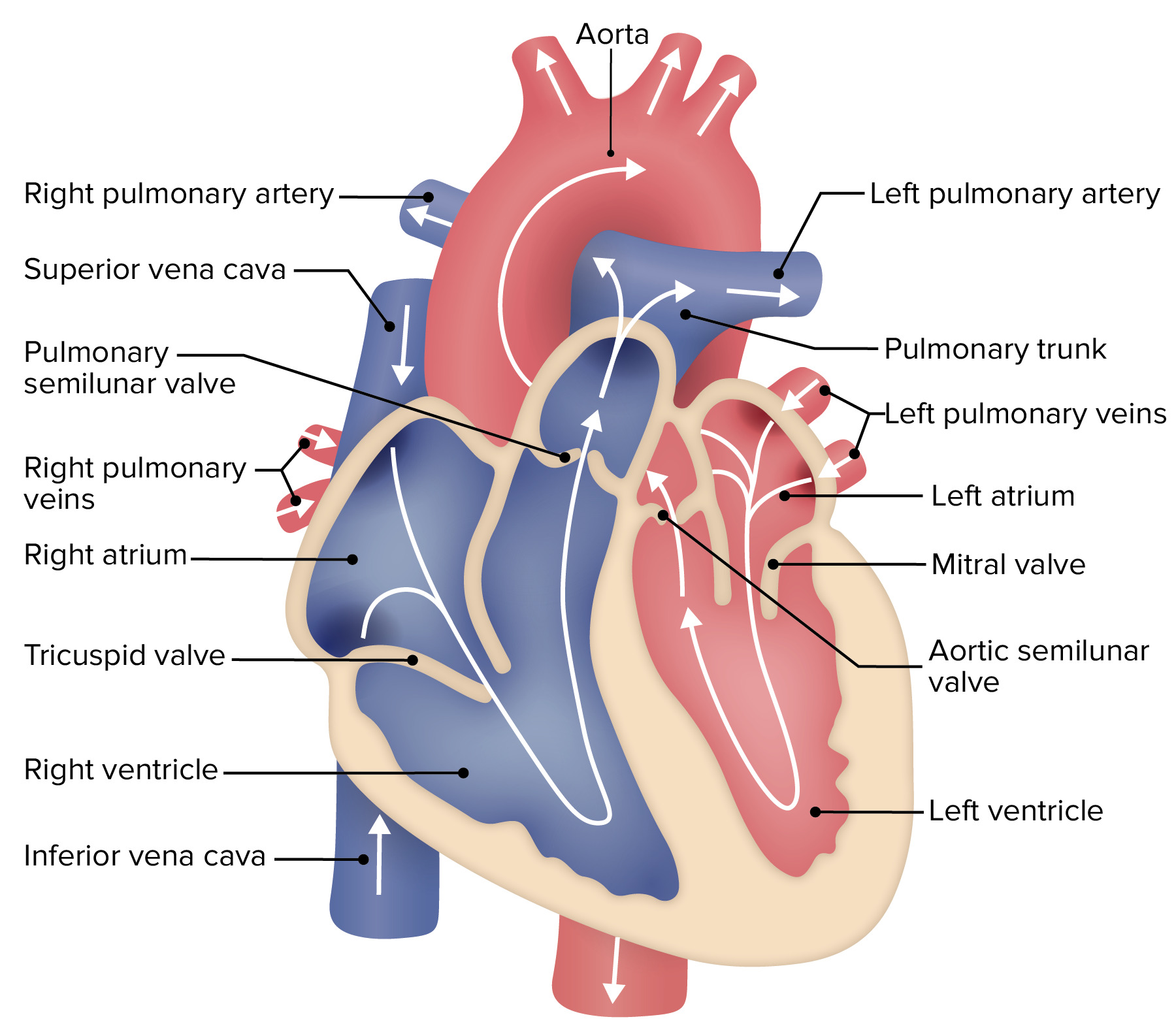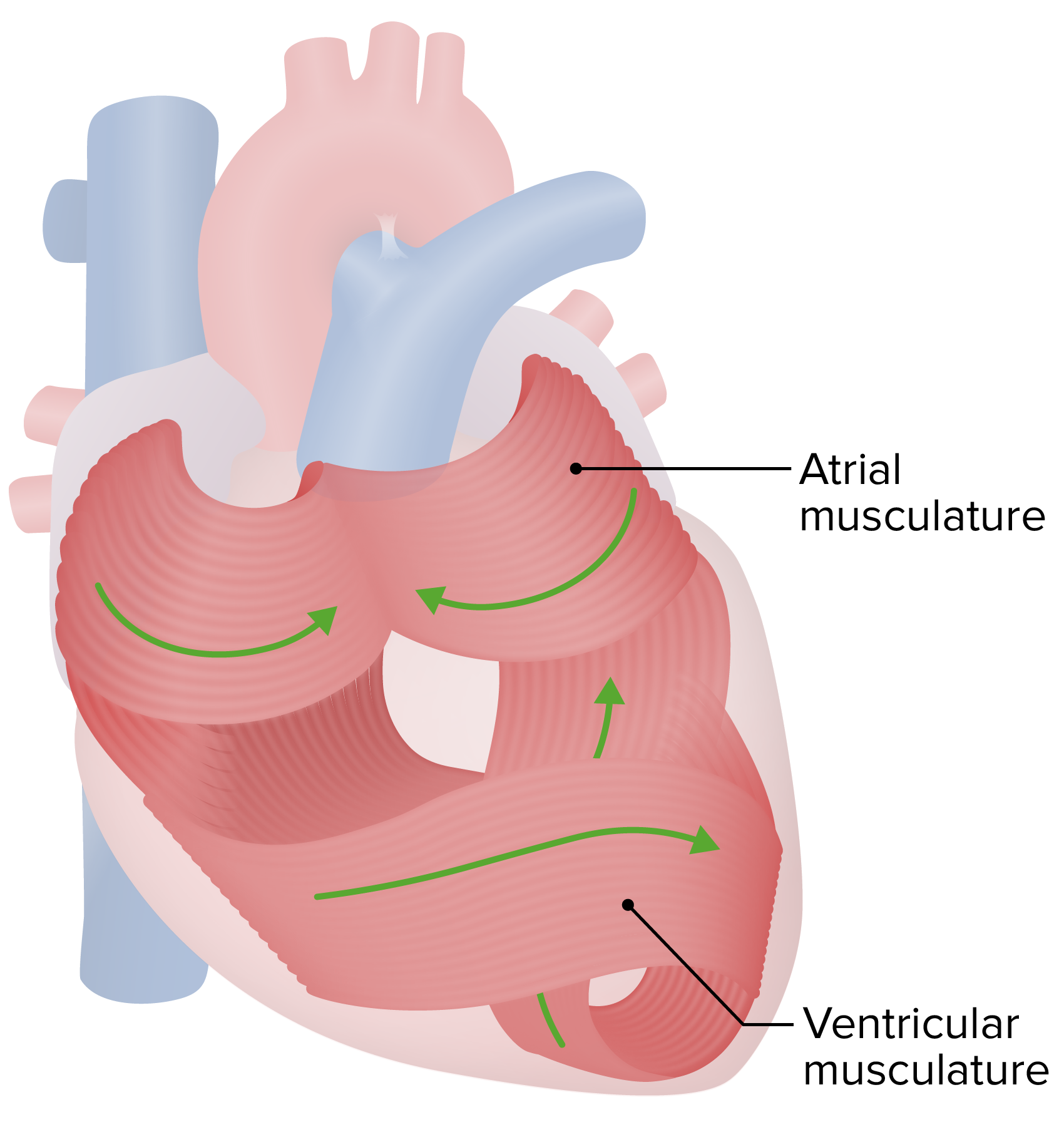Playlist
Show Playlist
Hide Playlist
Atrial Systole and Diastole – Cardiac Cycle
-
Slides CardiacCycle CardiacPhysiology.pdf
-
Download Lecture Overview
00:01 Thad Wilson: Now let's talk a little bit about atrial systole. 00:04 We kind of ended on it being the last little kick of volume into the left ventricle. 00:11 It's initiated by the p wave from the ECG. 00:15 It occurs again right at the end of ventricular diastole. We talked about it also producing a little bit of pressure on its own. 00:27 The pressure that it induces involves squeezing in on the blood that's there right at the end. And that, again, normally pushes about 10% into the left ventricle to cause the full filling. 00:41 So someone really doesn't need to have a lot of atrial systole under most circumstances. 00:49 In fact, you could have a cardiac arrhythmia known as atrial fibrillation, in which the atrium really don't contribute much to ventricular filling. 01:01 And you could be walking around and you might not even know that person has this arrhythmia. On time, though, when atrial systole becomes very important, aren't things like during exercise, where you have large volumes of blood coming back to the heart? And the top part can help squeeze that blood into the left ventricle so that you can get a better contraction out. 01:24 Because that way you can utilize the frank-starling mechanism to push more fluid out per stroke without utilizing any more energy. 01:34 Atrial diastole occurs after atrial systole. 01:39 Remember that this atrial kick is what creates the A wave. 01:44 However, during the distal portion of the atria these are phases two through seven. 01:50 There are two other waves we need to be concerned about. 01:53 The first of these is known as the C wave. 01:57 The C wave occurs during the contraction of the ventricles. 02:01 This is actually a pressure reverberation that occurs. 02:06 It either occurs during phase two, as shown in the graph, or sometimes even a little bit into phase three. 02:14 The other way we need to be concerned about is the v wave. 02:18 The v wave occurs after you start to get blood filling the atria. It continues to fill the atria until suddenly the AV valves open and there is a sudden pressure fall that's known as the V wave. 02:35 So in terms of the atrial filling pressures and the atrial contraction pressures, we can look at a C and V being those items that we want to make sure we have a good feeling for why they are occurring.
About the Lecture
The lecture Atrial Systole and Diastole – Cardiac Cycle by Thad Wilson, PhD is from the course Cardiac Physiology.
Included Quiz Questions
During which phase of the cardiac cycle does the a-wave occur?
- Phase 1-2
- Phase 5-6
- Phase 3-4
- Phase 6-7
- Phases 5-7
What percentage of ventricular filling can atrial systole account for during exercise conditions?
- 40%
- 60%
- 50%
- 10%
- 30%
Customer reviews
5,0 of 5 stars
| 5 Stars |
|
5 |
| 4 Stars |
|
0 |
| 3 Stars |
|
0 |
| 2 Stars |
|
0 |
| 1 Star |
|
0 |





